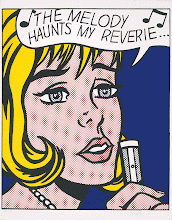Recent Posts
Thursday, September 19, 2013
Only God Forgives
Posted by
I.L.
Only God Forgives tries to eliminate offscreen space. Characters are situated at the center of the frame, pulling our attention inward, in the same way a man is drawn to the center of a vortex, disregarding matters outside the four sides of the frame. Compositions are carved in stone and shots are self-sufficient. When a scene is broken down into a series of shots, for instance in the karaoke scenes, the images onscreen betray a sinister wholeness, where shots that inhabit the same space do not even appear contiguous, for the frame contains all that there is to be seen, forcefully imposing its four-corner boundaries in a beautiful finality. Exploration is out of the question when there is nothing left to explore; when the camera moves, it follows a preordained path, the space presentable only under strict conditions. In order to keep things under his full control, Nicolas Winding Refn is forced to express his unified vision through an impossible act of dismemberment: separating light from its source, color from the spectrum of light (color here looks like globs of glow-in-the-dark paint), Bangkok from Bangkok.
I speculate Refn must have been furious during the scene where Julian (Ryan Gosling) tracks down Chang (Vithaya Pansringarm), the Angel of Death, through the open streets of Bangkok only to see him vanish. Unlike the rest of the film, where the director’s God-hand is omnipresent, this scene shows a city breathing, its cars, street vendors, passersby, untethered to the director’s vision, which is something this God cannot forgive. I have never been to Bangkok, but whether the film is untrue to Bangkok as a city is not the point of interest, rather it lies in its transformation of a real Bangkok skyline into one of the most enchanting matte paintings in cinema.
While the film’s mise-en-scene is under the iron grip of the director, its narrative is free-floating. Scenes start in media res; the film moves as if it were walking through one of its diabolical corridors where it happens to chance upon an open door inside of which is a neat and tidy collection of repression and destruction. Scenes are never anchored, they drift, in a purple haze, into one another, from dream to reality to dream, so in one hallucinogenic transition it seems Julian is fingering his own mother (Kristin Scott Thomas). Connections between scenes are magical as well as muddled. Near the beginning, in a moment of transference, Julian’s zombie walk is superseded by Chang’s, and throughout the entire film characters in completely different spaces appear to be looking straight into each other’s eyes. Once again, the God-hand emerges out of the shadows: any ambiguity coming from the connections between scenes, like the offscreen space of Bangkok, is out of the director’s control and must be streamlined into a morass of existential and Oedipal instincts, or at least their superficial signifiers.
Refn’s control over the film is less of a Supreme Creator and more of a little child protecting his personal playground from any unwanted outside interference. But Refn’s playground, distinct from others from its complete lack of play, does not necessitate an unaffecting experience. Hyperstylization has its place in the cinema, but in a strange way Refn’s maximalist impulses minimize everything. An all-or-nothing, go-for-broke attitude leaves behind the faint music box twinkles of a pretty Thai ballad. One wishes to know what Refn could have done with the monumental elephants of the region, then again no one can control elephants.



0 comments:
Post a Comment